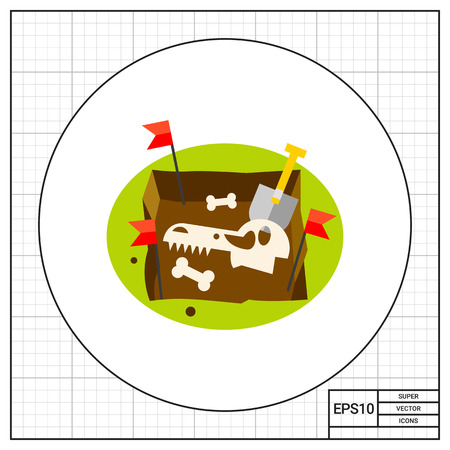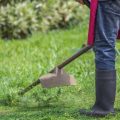Understanding Accessibility in Garden Design
Accessibility is a crucial aspect of modern garden design, particularly here in the UK where gardens are cherished as extensions of our living spaces. When we talk about accessibility, we mean creating gardens that everyone can enjoy—regardless of age, mobility, or ability. This inclusive approach ensures that no one is left out from experiencing the peace and pleasure that outdoor spaces provide. Thoughtful garden design takes into account the diverse needs of individuals, making sure paths are easy to navigate, surfaces are stable, and features like raised beds are available for those who may find bending or kneeling difficult. By focusing on accessibility, we foster a sense of community and wellbeing, turning our gardens into welcoming spaces for all to relax, socialise, and connect with nature. In the UK, where weather and tradition shape our outdoor lifestyles, designing accessible gardens not only enhances comfort but also encourages everyone to make the most of their green spaces throughout the year.
Benefits of Raised Beds for All Abilities
Raised beds bring a host of advantages that make gardening more accessible and enjoyable for everyone, regardless of age or ability. They are especially beneficial in creating inclusive gardens that cater to the needs of wheelchair users, individuals with limited mobility, and gardeners seeking a more manageable and comfortable experience.
Improved Access for Wheelchair Users
One of the most significant benefits of raised beds is their ability to be customised to various heights and widths. This flexibility allows wheelchair users to easily reach plants without having to bend or strain, making gardening a more independent and enjoyable activity. Positioning beds at an optimal height ensures that all areas are accessible from a seated position, eliminating unnecessary barriers.
Support for Gardeners with Limited Mobility
For those who find kneeling or bending difficult, raised beds can be designed to reduce the need for uncomfortable movements. By elevating the soil level, gardeners can tend to their plants while standing or sitting comfortably on a bench or garden stool. This thoughtful design consideration helps prevent aches and pains, encouraging people to spend more time outdoors and remain active.
Easier Maintenance for All Ages
Raised beds simplify many routine gardening tasks, from weeding to watering. The contained space makes it easier to control soil quality and drainage, which in turn promotes healthier plant growth. Additionally, raised beds often have fewer weed problems, reducing the time and effort required for upkeep—a real boon for busy families or older adults who want a low-maintenance option.
Key Advantages of Raised Beds
| Benefit | Description |
|---|---|
| Customisable Height | Adaptable for wheelchair access and reduced bending |
| Improved Soil Quality | Easier control over nutrients and drainage |
| Pest & Weed Control | Fewer weeds and better protection from pests |
| Easier Maintenance | Less physical effort needed for planting and upkeep |
In summary
Raised beds are an excellent choice for anyone looking to create an accessible garden space. Their adaptability supports independence, comfort, and enjoyment—helping everyone take part in the pleasures of British gardening.

3. Choosing the Right Materials and Heights
When designing accessible gardens in the UK, selecting appropriate materials for raised beds is essential for both longevity and ease of maintenance. Timber is a classic choice, widely available throughout Britain, and blends beautifully into natural garden settings. Opt for pressure-treated softwood or naturally durable hardwoods like oak or larch, which resist rot and withstand British weather. Alternatively, recycled plastic boards are increasingly popular as they are highly durable, require little upkeep, and support eco-friendly gardening practices.
Brick or stone raised beds offer a permanent, sturdy solution and add a touch of traditional British charm to any garden. However, these materials require more effort to install and can be more expensive. For those seeking lightweight options, metal beds made from galvanised steel provide weather resistance and a contemporary look.
The height of raised beds is crucial for accessibility. For wheelchair users or those who garden seated, aim for a height between 60cm and 75cm (about 24-30 inches). This allows easy reach without straining the back or arms. For people who prefer to stand while gardening but may have difficulty bending, beds between 40cm and 60cm (16-24 inches) work well. Always consider the width too—no wider than 120cm (about 4 feet)—so that everyone can comfortably reach the centre from either side.
Selecting suitable materials and carefully planning bed heights ensures your garden remains practical, attractive, and welcoming for gardeners of all abilities throughout the changing British seasons.
4. Layout Tips: Safe Paths and Proximity
When designing accessible gardens, the layout is just as important as the features you include. A well-planned layout ensures that everyone, regardless of ability, can navigate and enjoy the space comfortably and safely. Here are some practical tips for creating user-friendly garden paths and placing raised beds for optimal accessibility.
Wide, Level Paths
Paths should be at least 90cm wide to accommodate wheelchairs and mobility aids. If possible, opt for even wider paths—up to 120cm—to allow two people to walk side by side or for easier turning. Ensure all paths are level to prevent trips and make movement effortless.
Recommended Path Widths
| Path Type | Minimum Width |
|---|---|
| Main Walkways | 120cm |
| Side Paths | 90cm |
Non-Slip Surfaces
Choose materials that provide good grip in all weathers. In the UK, rain can make surfaces slippery, so opt for textured paving, resin-bound gravel, or rubber matting where needed. Avoid smooth tiles or polished stones that become hazardous when wet.
Bed Placement for Easy Reach
Raised beds should be positioned so gardeners can easily reach every part without over-stretching or stepping into the bed. Place beds no more than 120cm deep if accessible from one side, or 180cm if accessed from both sides. Leave enough space between beds for easy wheelchair or walking frame access.
Ideal Bed Placement Guide
| Access Type | Maximum Bed Depth |
|---|---|
| One Side Only | 120cm |
| Both Sides | 180cm |
Additional Tips:
- Avoid sharp corners on paths and beds to reduce injury risk.
- Keeps frequently used areas close to entrances or seating spots.
An accessible garden layout creates a welcoming space for everyone. By focusing on safe paths, non-slip surfaces, and smart bed placement, you’ll ensure your garden is practical and enjoyable year-round.
5. Plant Selection and Maintenance Made Simple
Choosing the right plants for accessible raised beds is essential, especially when creating gardens that everyone can enjoy. In the UK, it’s best to select low-maintenance and sensory-friendly plants that thrive in our climate. Hardy perennials like lavender, rosemary, and heuchera are excellent choices; they require little attention and offer wonderful scents and textures. For visual appeal, try planting cheerful marigolds or native wildflowers, which also attract pollinators.
When it comes to maintenance, opt for mulch to retain moisture and reduce weeding. Grouping plants with similar water needs makes caring for them much easier. Consider installing an automatic watering system or using self-watering containers—these are perfect for those with limited mobility or time. Regular deadheading of flowers and occasional pruning will keep your raised bed garden looking neat without too much effort.
For year-round interest, mix evergreen shrubs such as boxwood or dwarf conifers with seasonal favourites like violas and cyclamen. Sensory elements can be added with lamb’s ear (soft foliage) or fragrant herbs near the edges of beds for easy access. Raised beds themselves make reaching, planting, and harvesting simpler for all abilities, encouraging everyone to take part in garden care.
6. Community Inspiration: Accessible Gardens in the UK
Across the UK, inclusive gardening is thriving thanks to thoughtful design and community effort. From city allotments to public parks, raised beds are helping people of all abilities enjoy gardening together. For example, The Eden Project in Cornwall features accessible pathways and elevated planters, allowing wheelchair users and those with limited mobility to take part in planting and harvesting. In Manchester, the Incredible Edible initiative has transformed public spaces into edible gardens with raised beds designed for easy access, bringing neighbours together and fostering a sense of belonging. Many local councils now support community gardens like the Edinburgh Botanic Garden’s Therapy Garden, where raised beds are positioned at different heights so everyone—regardless of age or ability—can participate comfortably.
Encouraging Inclusive Gardening Practices
These real-life examples show that accessible garden design is not only possible but also enriches communities. By creating spaces where everyone can dig, plant, and grow, we nurture both wellbeing and social connection. If you’re planning your own garden, consider visiting local projects or joining workshops hosted by charities such as Thrive or Trellis Scotland. Their guidance can help you design beautiful raised beds that welcome gardeners of all abilities.
Get Inspired by Local Success Stories
From small back gardens in Birmingham to large community plots in Bristol, accessible gardening is making a difference across the country. Sharing ideas and experiences helps raise awareness and encourages others to adopt inclusive practices. Together, we can make British gardens open to all—one raised bed at a time.


